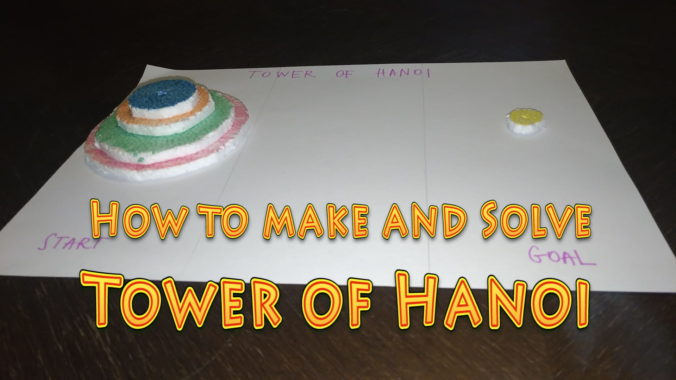

I drilled 90% of the way through the board to avoid the dowels from being visible from the bottom of the board.

(reference the fourth picture above)įinally, I used a 1/4" brad-point drill bit to drill these holes where the dowels will snugly sit. I marked the middle peg hole at the exact center, and the other two holes were located 3 1/4" from the center. To do this, I used a tri-square to find the exact center of the board and drew a straight line dividing the board lengthwise into two pieces. After this, I ran the board horizontally through the joiner, once on both sides to really straighten up the board.Īfter the board was made nice and square, I finalized its length by cutting it to 10".Īt this point, it was time to mark where to drill the holes for the pegs to be placed. I cut the straightest section of the board out, then ran the board vertically through the joiner to straighten the edges. Even if you don’t recognize the puzzle by name, it might look familiar to you: If you don’t have a.
#DIY HANOI TOWERS HOW TO#
Finally, it is shown that many features of previous models are embedded in the constraint elimination model.I chose a piece of poplar pallet wood that was 3 1/4" wide. Tower of Hanoi is a fun puzzle that can challenge the way you think about solving problems. Make a Tower of Hanoi Puzzle Game: In this short project, I will demonstrate how to build a Tower of Hanoi puzzle game using wood I acquired from pallets. Browse a massive range and enjoy a 0 Interest Plan & Free. The energy you consume to perform such a move is the distance traveled by the moved mini-tower. Shop online for Professor Puzzle Grand Masters Tower Of Hanoi Puzzle on Virgin Megastore Qatar. You are allowed to move a tower whose base is a disk of size k only on top of the disk with size k+1 (which may be the top of another mini-tower). They were to move the stack from the first. Your goal is to make a tower with all n discs, consuming as little energy as possible in the process. Because successive eliminations of implicit constraints enlarge the problem space and have an effect on planning, the model integrates “plan-based” and “constraint-based” approaches to problem-solving behavior.Simulating individual protocols of Tower of Hanoi situations shows that the model, which has a proper set of constraints, predicts a single move with no alternative on about 61% of the movements and that protocols are quite successfully simulated movement by movement. In this story the monks of the monastery have the task of moving 64 discs of increasing size amongst three towers.

When impasses occur, a constraint elimination mechanism is applied. Here is another, and more visual recursive Towers of Hanoi program, written in CodeAPeel-C assembly language with a built-in pixel screen. In an optimal game (with the least number of moves), find how many moves have been played given towers. The model operates on goal-related rules and a set of constraint rules in the form of “if (state or goal), do not (Action)” for the explicit constraints in the instructions and the implicit constraints that come from misconceptions of legal moves. Unlike day 1, the problem is slightly different today. A general model of problem-solving processes based on misconception elimination is presented to simulate both impasses and solving processes.


 0 kommentar(er)
0 kommentar(er)
